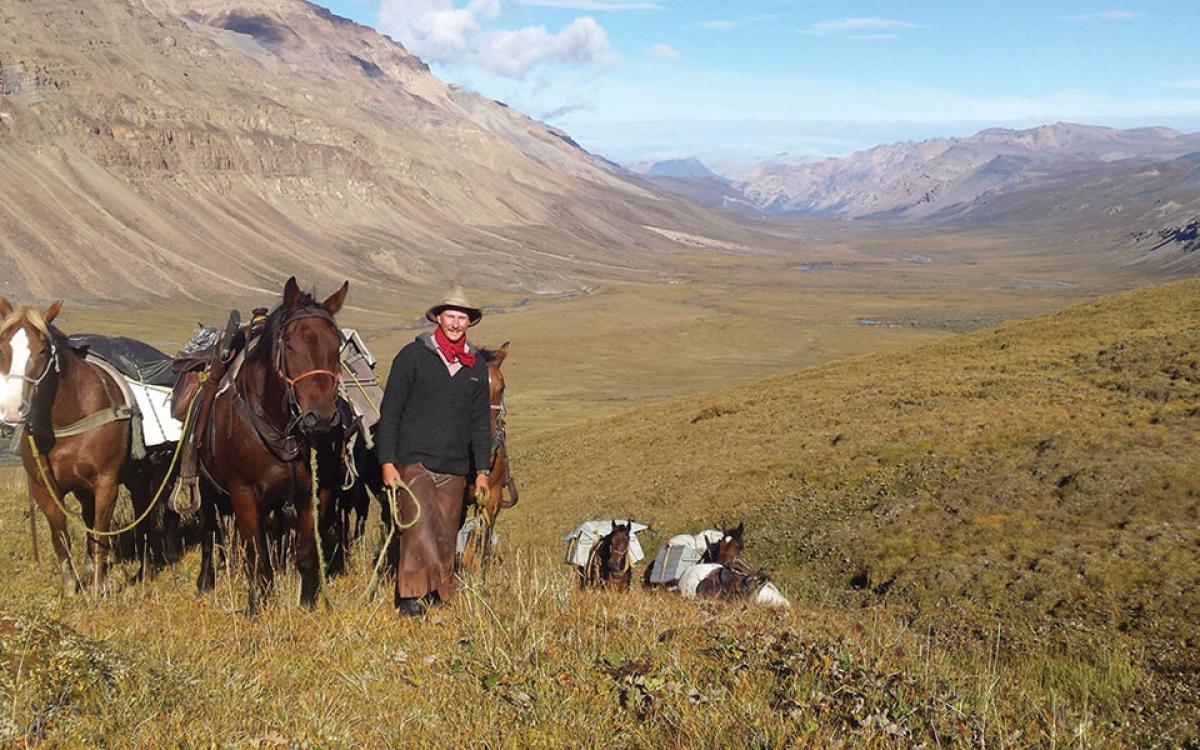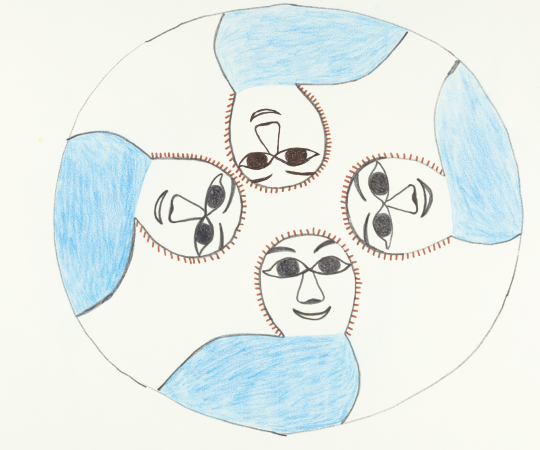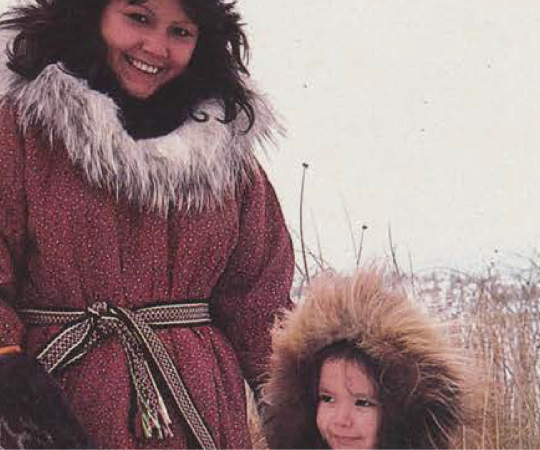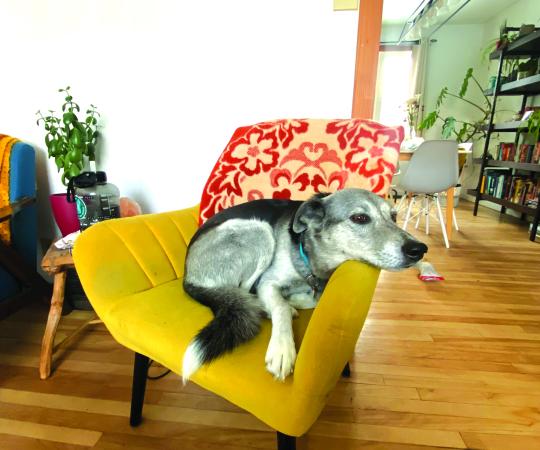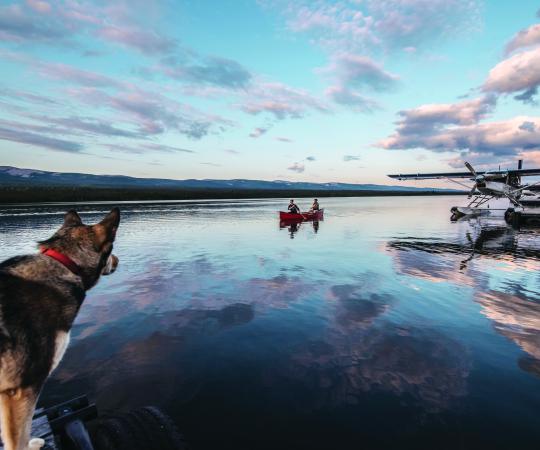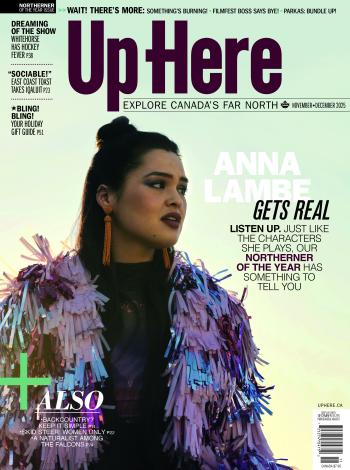Every year at the end of June, around 30 horses are trucked from Fort St. John, B.C., down the North Canol Trail to the border between the Yukon and NWT and led into the bush. Most of them have been doing this for years. They know where they’ll arrive, after five days of walking, and they know what they can eat along the way. A few of them are new, watching the experienced horses as they strip a branch of willow leaves without breaking stride. In three months, they’ll head back out the same way.
These are among the last horses in the Mackenzie Mountains, keeping alive a tradition not native to the North but certainly well-suited to it: the horseback hunt. Throughout history, this species has proven time again to be tough and adaptable, and even in the harsh wilderness of the North, this species could almost survive on its own. But there are times when the partnership between a horse and its rider is more important for each other’s survival than any external factor.

Horses were used as pack animals by the American military as it built the Alaska Highway in the 1940s, and were soon being used by hunters in the mountains. Harold Grinde has been operating Gana River Outfitters for close to 20 years, and while much of the hunting world has moved to helicopter drop-offs and hikes, Gana River—as well as Redstone Trophy Hunts and Arctic Red River Outfitting—still bring horses in every summer.
“There’s something special about hearing those horse bells, riding along on your horse to get where you’re going,” says Grinde. “It might be a seven- or eight-hour ride and you’ve got your whole camp with you and your food for the 10 or 12 days. Everything’s loaded on those horses and you jingle through the mountains, down through the valleys.” A strong horse carrying your gear means a bit more luxury. You can bring along bacon and eggs and bread, plenty of coffee, a wall tent to sleep in—compared to packing the bare necessities because it’s all going in your backpack. “That part is appealing to some people,” says Grinde. “Though some of the younger generation are looking for exactly the opposite. They’re looking for the challenge.”
Along the way, the horses snack on sedges, jointed grasses and willow—different from what they’d find on the prairies of the south, but plenty to survive on. “They learn what to eat,” says Grinde. “Some of the horses know what mushrooms are safe and they go around eating every mushroom they find. They’re tough. They know how to survive. The young horses learn from the old horses and that’s the way they work.” Grinde brings in some grain, but that’s just candy for the horses, really—and a handful of that at the end of the day keeps them from wandering too far into the bush.

The things that will spook a horse in the Northern bush aren’t what you’d expect. “People will think I’m absolutely crazy, but I know for a fact that bears and horses graze in the same meadows,” says Grinde. “Our horses can come across a grizzly bear on the trail and they usually don’t pay any attention [to each other]. If they come across a caribou on the trail, most of them will turn inside out and just panic. I don’t know what it is about a caribou—the way they trot and bounce—but a grizzly bear, the horses just ignore them.”
Likewise, the dangers of keeping horses in the North over the winter aren’t quite what you’d think. “They’re survivors. Some of the old, old outfitters actually wintered their horses in the Mackenzie Mountains,” says Grinde. Horses can survive the cold and they can find enough to eat, but wolves would invariably move in on the camp. “They had somebody there trying to keep the wolves away, but when it’s dark 18 hours a day in the winter, that’s tough.”
The rider and the horse need each other out there in the bush. And when it comes down to it, that’s the experience you get on a horseback hunt—a partner to rely on. “I’ve had horses take me home in the mountains in raging snowstorms where I couldn’t see 10 feet,” says Grinde. It’s like they’ve got a natural homing instinct. “You tie your horse up at treeline and you’re on your feet all day. Whether you’re successful or not, you’re totally exhausted. It might be getting dark already, depending on the time of year. And camp is still two, three hours away. You just tighten your cinch, crawl on, and that ol’ horse takes you home.”

